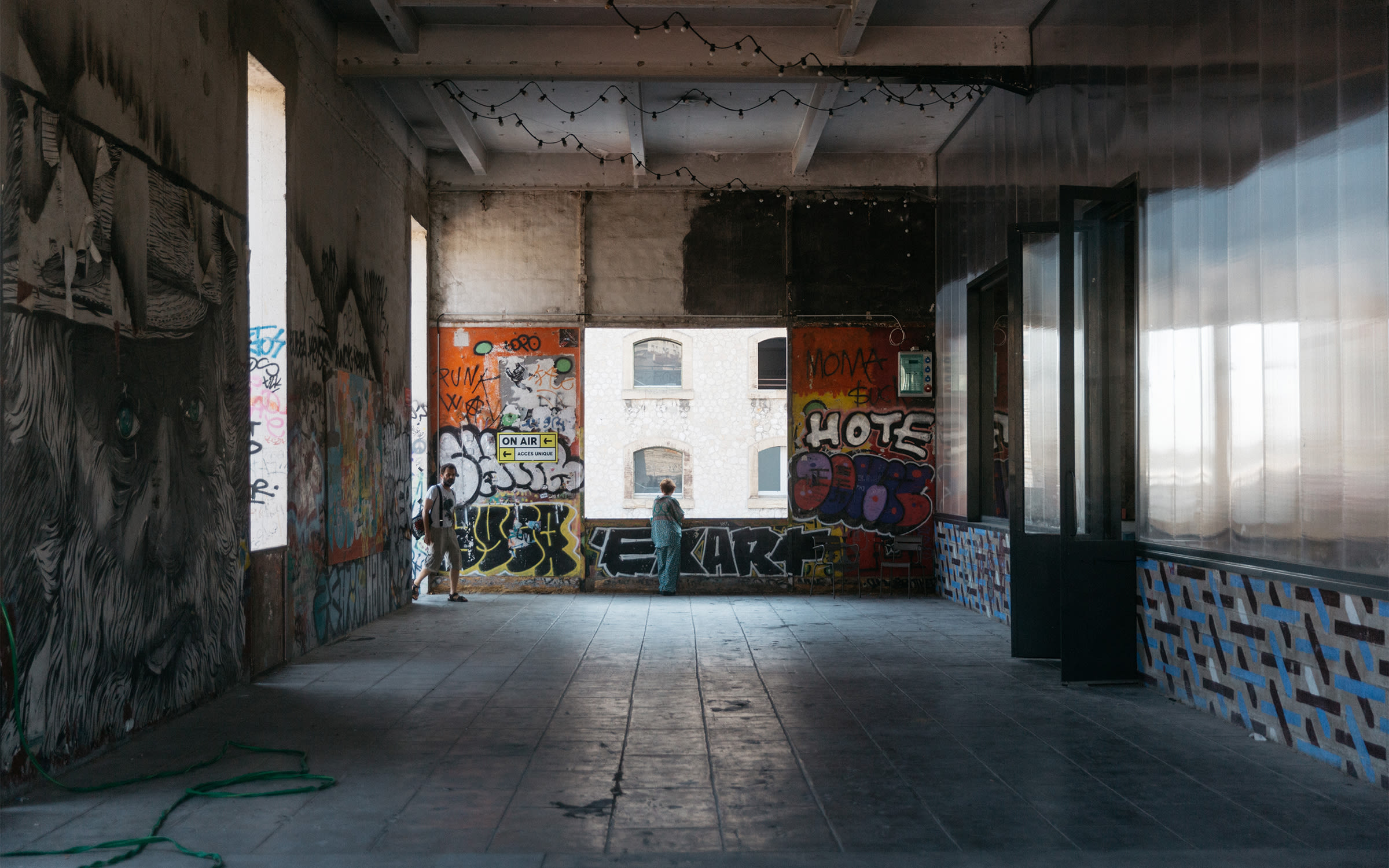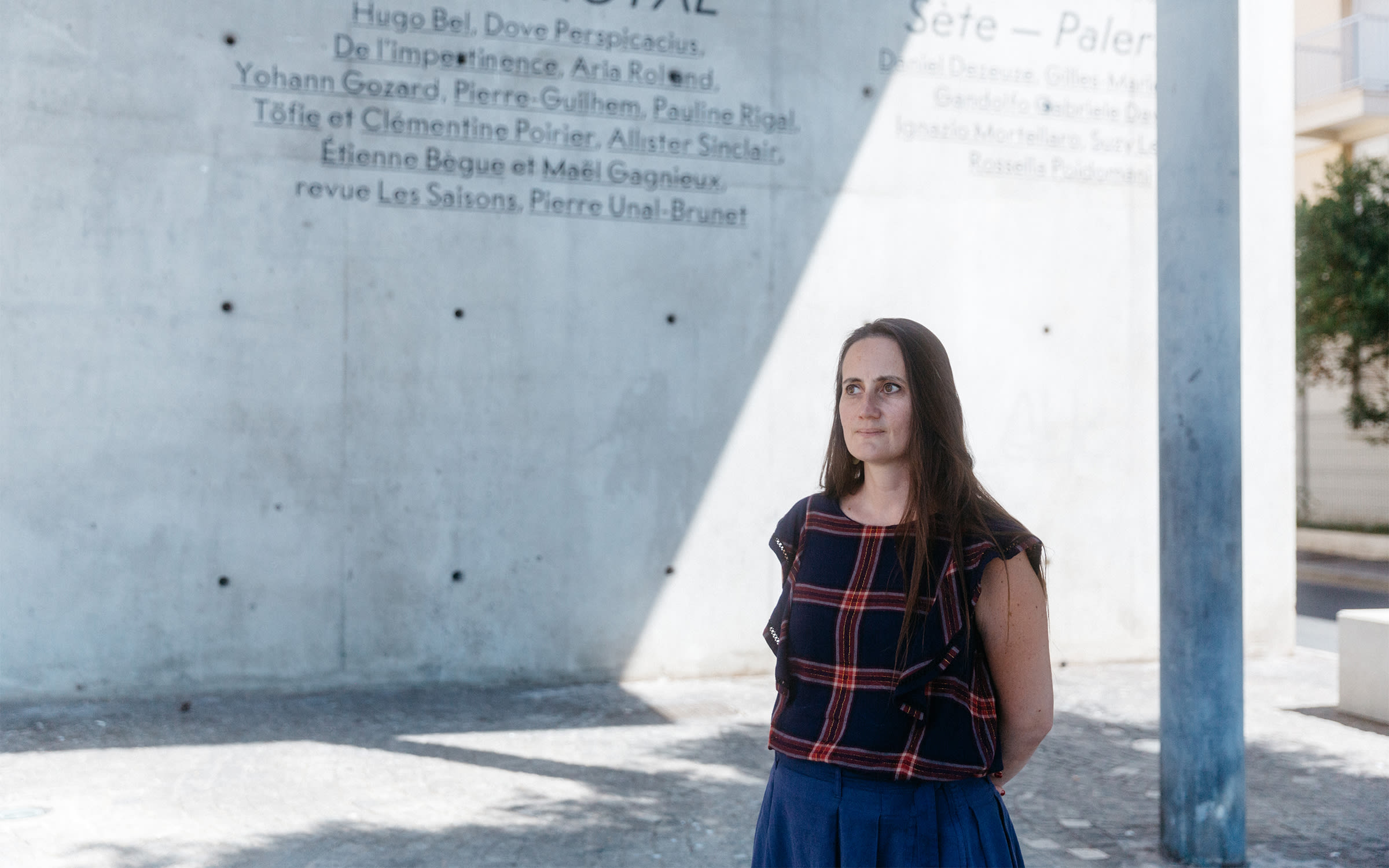‘Fifteen years ago, everyone was going to Berlin. Today, young artists are moving to Marseille,’ says Éric Mangion, Director of the Villa Arson art center in Nice. Indeed, since 2015, 10,000 people under the age of 34 have flocked to the city every year – and artists are not being left out. The city’s industrial past means many vacant spaces are at prices that are still affordable, and it has seen many studios, artist-run spaces, and other experimental projects dedicated to emerging creation flourish. One such place is Artagon Marseille; set up in 2021 at the former Ricard pastis factory, it offers 18-month residencies to 50 young artists and cultural project leaders. The experience was so successful that it will be duplicated in the Pantin suburb of Paris at the beginning of the 2022 academic year.
Far from being limited to the boundaries of Marseille, this effervescence embraces the entire Mediterranean region. ‘We have seen everything change in recent years,’ says Jean-Pierre Blanc, Director of the Villa Noailles, Hyères. ‘Marseille, the European Capital of Culture, to start off with; the inauguration of Mucem, and of Luma in Arles; the arrival of foundations like Carmignac in Porquerolles, or CAB in Saint-Paul-de-Vence... there is a desire and an appetite.’
Blanc, together with Anne Racine, Director of the Villa Carmignac, were able to seize this momentum by creating the Plein Sud network in 2020, which brought together around twenty venues. At that time, they were determined to attract holidaymakers who were forced to spend the summer in France during the pandemic. Since then, the network has far exceeded these initial ambitions and now includes 75 contemporary art spaces over a territory stretching from Sète to Monaco.
‘The pandemic helped us to understand that we could develop careers as artists, curators and critics without being in Paris, while enjoying a better quality of life and a stronger, closer-knit network,’ acknowledges Vincent Honoré, Director of Exhibitions at MO.CO., Montpellier.
The Plein Sud network brings together several of the regional Frac public collections of contemporary art, alongside private foundations and hybrid spaces such as the Cabane Georgina, perched up in the heights of the 8th arrondissement in Marseille. Originally a fisherman's hut, it is now an exhibition space and artists' residence. The 100 m2 dwelling overlooks the sea and hosts exhibitions that often spill over into the surrounding neighborhood. The Cabane Georgina is co-managed by artist Dimitri Arcanger and Jérémy Chabaud, Director of Jeune Création, an artists’ association of which the Cabane is the Marseille branch.
‘Private institutions allow us to break through the administrative subdivisions associated with public institutions,’ says Mustapha Bouhayati, CEO of Luma Arles. The South of France boasts many such private foundations; in Saint-Paul-de-Vence the historic Fondation Maeght was recently joined by the Fondation CAB; in Apt there is the Fondation Blachère; and L'Isle-sur-la-Sorgue is home to the Fondation Villa Datris. The public sector also has much to offer. In Marseille, the Triangle - Astérides art center, which hosts artistic residencies, is recognized as being of national interest.
Victorine Grataloup, recently appointed director of Triangle - Astérides, sees an obvious complementarity between the numerous French Mediterranean scenes: ‘There is a common dynamism between several cities – Marseille, Nice, Montpellier, Nîmes, Sète… We see a density of educational establishments and increasingly dynamic institutions. These cities attract large audiences.’
In Nice, Villa Arson incorporates both an art center and an art school. Those lucky enough to study in the imposing building with its brutalist architecture are exhibited there once they have graduated. For Éric Mangion, ‘this creates a different kind of relationship with young artists, both on a personal and professional level.’

When creating MO.CO., the city of Montpellier also chose to combine a teaching establishment with an art center. With seven to eight exhibitions annually, MO.CO. encompasses two exhibition centers and an art school: the Hôtel des collections; La Panacée, conceived as a veritable artistic laboratory; and the École des Beaux-Arts. 'It is all very porous,' explains Vincent Honoré. ‘The curators are invited to mediate at the school, to follow up, and to promote a dialogue with the students.’
A dense and bourgeois city, where the price per square meter is less favorable for young artists than in Marseille, Montpellier is nevertheless well represented on the contemporary art scene. Add to this its proximity to Sète, which, far from its seaside resort appearance, cultivates an artistic and broad-minded spirit crystallized by the regional art center Crac Occitanie. It's cold and minimal concrete facade conceals a generous space that allows it to develop substantial projects, particularly monographical exhibitions. For the past four years, the director Marie Cozette has been working to expand the ways in which art is exhibited by tackling questions of gender or class, while also honoring artists from Sète. The city is itself a hive of activity that is attracting more and more newcomers - in particular artists who are coming to live there or are returning.
Within this diversity of scenes, hospitality is an essential component. At Triangle - Astérides, this is characterized by an openness that extends well beyond the local level: ‘We are lucky to have a structure that is very connected to international scenes,’ explains Victorine Grataloup. ‘We accommodate 24 residents a year of local, national, and international origin, who come together to meet each other: some are from Algeria, others from the French countryside but are of Chinese descent. For me, this interplay of scale is the most important thing: our role is to put people in touch with each other, from the furthest away to the closest.’
Hospitality is also central for Luma Arles, which continuously welcomes artists, researchers, and writers, and offers up to 2,000 m2 of exhibition space to its guest artists. ‘Luma is entirely devoted to production, and therefore to experimentation, which is played out on all levels,’ explains Bouhayati, highlighting the ecological aspect of the project. For him, Luma is the tool that Arles – well known for its Rencontres d’Arles photography festival – has been lacking to be able to fully distinguish itself.
Are hospitality and generosity a Mediterranean hallmark? This is certainly the opinion of Jean-Pierre Blanc: ‘We are discovering a new generation of collectors who love good restaurants, fine hotels and well-tended gardens. This is also our trademark: the French Mediterranean art of living, which is a plus for visitors.’ Visitors will be seduced by places like the Commanderie de Peyrassol and Château La Coste, two estates that combine wine with contemporary art.
At the Villa Carmignac, the collection embodies the vision of Édouard Carmignac and his son Charles, 'two people who don't like boundaries’, Racine points out. The Villa boasts 2,000 m2 of exhibition space and a park of several hectares. This timeless setting also stands out for its accessibility, with preferential rates or free admission for young people. ‘The herbal tea at the entrance, walking barefoot, and the proximity to the works of art allow for a rare intimacy and attract audiences that do not necessarily go to museums,’ says Racine.
The presence of the public is indeed the indicator of this Mediterranean revival, which depends as much on personalities and financial powers as on the real estate environment. And when asked about the region's staying power, Jean-Pierre Blanc concludes: ‘Everyone is making an effort, and everyone is happy to live together. I believe that in the current period, we need generosity and enthusiasm. Without that, for me, culture does not exist.’
Soizic Pineau is a freelance writer based in Marseille.
All videos and photos by Baptiste de Ville d'Avray for Paris+ par Art Basel.







